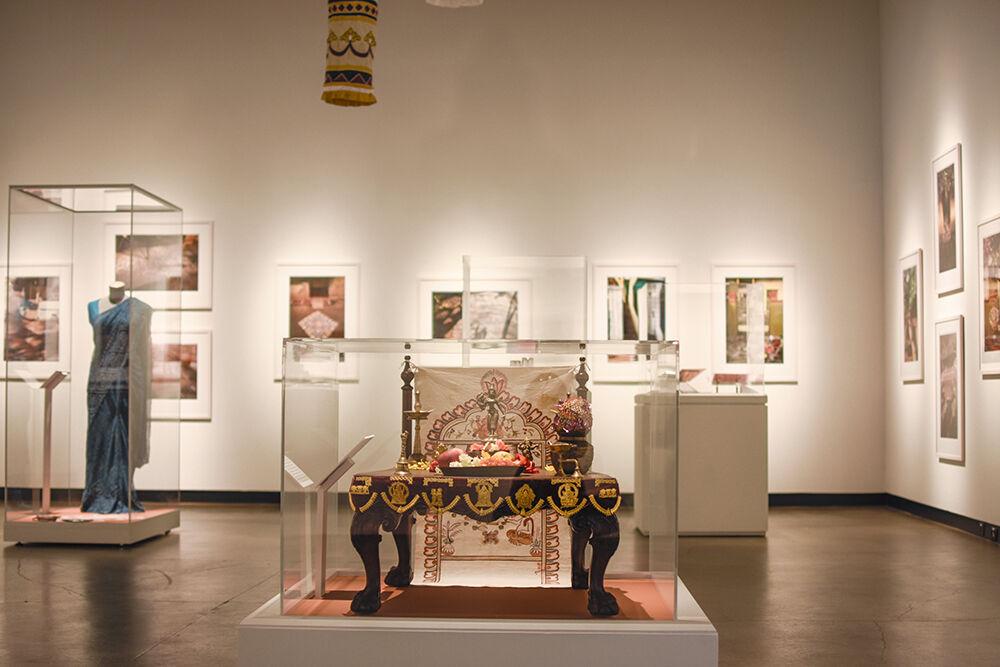“Across the Threshold of India” is an exhibition on display at the Gregg Museum of Art & Design. It features photographs taken by Martha Strawn that portray one of India’s religious practices of sanctifying space through threshold diagrams.
The art of creating threshold diagrams is one of India’s longest known religious practices. Hindu women create these diagrams using white rice flour, powdered chalk or limestone. They are prominent during important occasions, with pigments added to make the diagram colorful. On these occasions, the diagrams can take hours to create, while everyday diagrams only take 10 to 15 minutes to complete. While the diagram exists, the space that it occupies is marked as blessed and sacred. They are found throughout India, with rural communities calling the art “kolam” and urban communities calling it “rangoli.” Rangoli is a free flowing art, while kolam is more abstract and uses dots connected with lines and loops.
Photographs of these diagrams taken by Strawn are on display throughout the exhibition. Each photograph holds a different pattern and story. They contain symbols from simple day-to-day designs to life’s milestone moments such as fertility rituals, weddings and deaths.
As mentioned in her book, “Across the Threshold of India: Art, Women and Culture,” Strawn obtained most of her information from women directly executing this practice to provide herself with a more authentic understanding of the diagrams in their environment. Strawn noted how the women’s art changed based on how their lives changed. Strawn has been to India to work on this project seven times. Most of her photographs are now in the permanent collection of Indira Gandhi National Centre for the Arts, the nation’s research center for Indian culture and art.
According to the book’s description, “‘Across the Threshold of India’ reveals, for the first time, the story of the threshold drawings, of how they evolved, what they have meant and represent in Indian and Hindu culture, and how the practice became a high form of vernacular art for religious and everyday life.”
These photographs are showcased across the wall along with objects from the museum’s permanent collection such as a household shrine, choli, stencils, pillow cover, chakla, kolam and rangoli pattern books and festival lanterns. A description of how each artifact is used and its meaning to those who practice Hinduism is provided for every piece.
“I love the part of the exhibit where they showed the puja set up and explained exactly what a puja was and the different steps that go into it,” said Rucheer Dave, a second-year studying economics. “As a Hindu, that’s one of the most important ways I express my devotion on a daily basis. My family and I do aarti, which is a short version of puja, every night and being able to see that representation was amazing. The facts regarding traditions of India presented in the exhibit were accurate overall, which was refreshing to see because there is a lot of misinformation out there regarding Hinduism and Indian culture.”
Quinn Harrison, a graduate student in the college of design and student ambassador at Gregg Museum of Art & Design said her favorite part of the collection was the interactive element that adds to the organic quality of the exhibit.
“We have a piece that people will be able to touch in a portion that will be opening up pretty soon,” Harrison said.
Check out Strawn’s extraordinary work and flip through her book by visiting this exhibition before Nov. 12, 2022.














